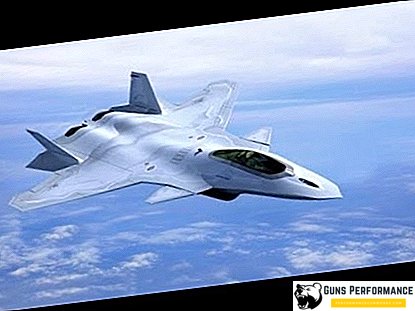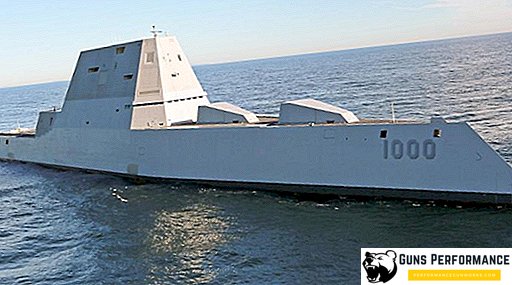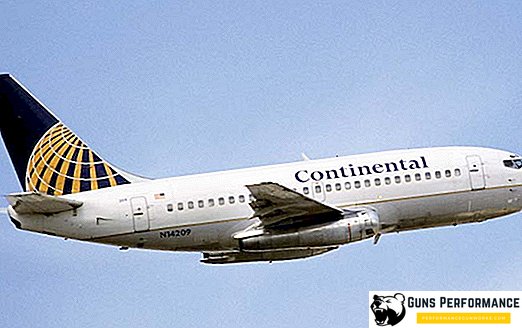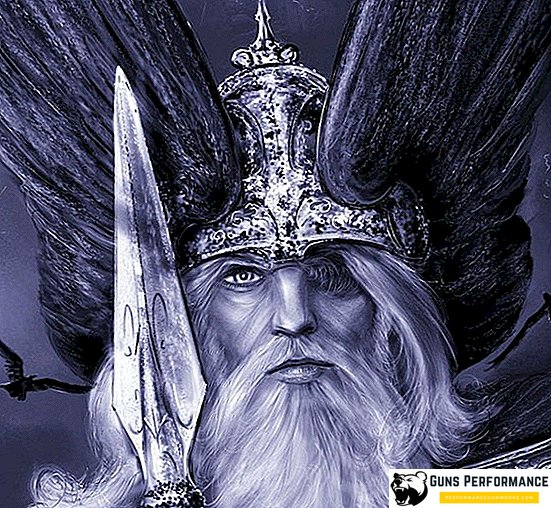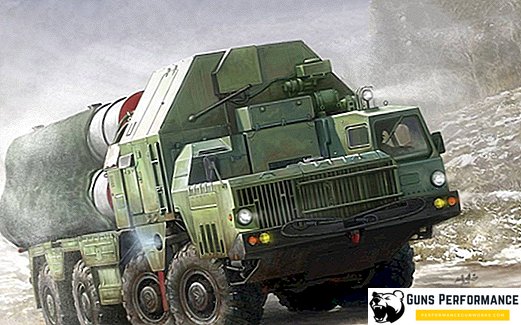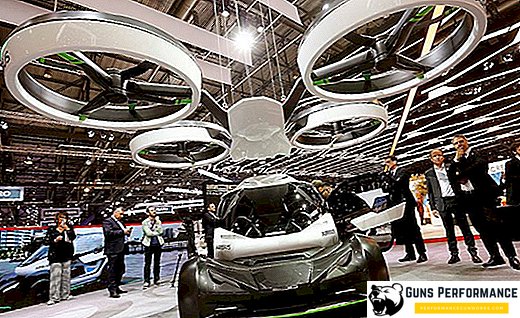
Su-39 is a promising Russian attack aircraft, the development of which began in the Sukhoi Design Bureau in the late 80s. This combat vehicle is the result of a deep modernization of the famous “flying tank” - the Soviet Su-25 attack aircraft. And if to speak more precisely, it was created on the basis of one of the modifications of the aircraft - the Su-25T, designed to destroy tanks and other enemy armored vehicles.
The modernization of the attack aircraft primarily concerned the complex of its electronic equipment. Having received a new avionics and advanced armament, the Su-39 attack aircraft significantly increased its combat capabilities compared with the base model. Su-39 is even able to conduct air combat, that is, to perform the functions of a fighter.
The first flight of the Su-39 aircraft made in 1991. Unfortunately, he was never adopted. In 1995, an aircraft factory in Ulan-Ude tried to start small-scale production of this aircraft, in total four attack aircraft were manufactured. It should be noted that the Su-39 is the export name of the aircraft; on the territory of Russia, this attack aircraft is called the Su-25TM.
An attempt to start mass production of the new attack aircraft came at a bad time - the mid-nineties. The financial crisis and the almost complete lack of funding from the state buried an interesting project. However, many years later, this wonderful car did not find its way into the sky.

The history of the Su-39
In the mid-1950s, a decision was made in the USSR to cease work on the creation of a new jet attack aircraft Il-40, and its predecessors were decommissioned. In the era of rapid development of missile weapons and supersonic aircraft, low-speed armored attack aircraft looked like a real anachronism. However, this was an erroneous decision.
In the 60s, it became clear that a global nuclear war was canceled, and for local conflicts, an aircraft was needed that could directly support ground forces on the battlefield. In service with the Soviet army, this machine was not. They tried to solve the task by equipping the existing aircraft with air-to-surface missiles, but they were not very suitable for performing such functions.
In 1968, the designers of the Sukhoi Design Bureau began, on their own initiative, the development of a new attack aircraft. These works led to the creation of the famous Soviet aircraft Su-25, which for its survivability and invulnerability received the nickname “flying tank”.
The concept of this aircraft was supposed to increase the survivability of the machine, a wide range of weapons used, as well as simplicity and manufacturability in production. To do this, the Su-25 actively used components and weapons that were developed for other Soviet combat aircraft.

The Afghan war has become a harsh test for the Su-25. However, she confirmed the correctness of the concept of attack aircraft, chosen by its creators. Already in the early 80s, the military wanted a modification of the attack aircraft, which would have been “sharpened” to fight the tanks and other enemy armored vehicles. To hit such targets, it was supposed to use guided anti-tank missiles (ATGM).
Customers demanded that the new aircraft was round-the-clock, could be used in adverse weather conditions, to hit any kind of military equipment. For the fulfillment of such wishes, the two-seater was more suitable, with a pilot and an airborne weapons operator. A similar scheme was used on attack helicopters and was quite effective. They decided to create a new attack aircraft based on the Su-25UB two-seat combat training aircraft.
The ATVM Vortex with a laser guidance system was selected as the anti-tank weapon for the new attack aircraft. Testing and testing of the new aircraft was somewhat delayed, so its mass production began only in 1990. He received the name of the Su-25T. It was planned to manufacture new attack aircraft at the Tbilisi Aviation Plant.
However, the collapse of the USSR, the office of Georgia crossed out all the plans. In Tbilisi, they managed to manufacture only about 20 SU-25T, after which the production was curtailed.
In 1986, on the basis of a promising Su-25T aircraft, it was decided to create another modification of the attack aircraft, the Su-25TM. The new aircraft was supposed to receive a more sophisticated on-board electronics complex, which would allow it to overcome the enemy's echeloned air defense system and more effectively hit ground targets, it also provided for the possibility of flying at supersmall heights with a curvature of the terrain.

At the Su-25TM planned to install a new radar-sighting system "Spear-25" and an improved sighting system for anti-tank missiles "Squall".
At the beginning of 1991, the first experimental Su-5TM aircraft took off; its serial production was also planned to be organized at the aircraft plant in Tbilisi.
In 1993, the production of attack aircraft was transferred to the aircraft factory in Ulan-Ude, the first pre-production aircraft took off in 1995. At the same time, the attack aircraft received its new designation, which today can be called official - Su-39.
For the first time, the new Su-39 attack aircraft was presented to the public at the MAKS-95 aviation exhibition. Work on the aircraft was constantly delayed due to insufficient funding. The third pre-production sample of the attack aircraft rose in the sky in 1997.
However, the Su-39 was not put into service, the mass production of the car did not take place. There is a project to modernize the Su-25T in the Su-39, but the anti-tank Su-25T was also removed from service with the Russian Air Force.

Description of the Su-39 attack aircraft
The design of the Su-39 as a whole repeats the design of the Su-25UB attack aircraft, with the exception of some differences. The plane is operated by one pilot, the place of the second pilot is occupied by the fuel tank and the compartment of electronic equipment.
Unlike the other modifications of the "flying tank", the gun installation on the Su-39 is somewhat offset from the central axis to make room for electronic equipment.
The Su-39, like all other modifications of the Su-25, has an excellent level of protection: the pilot is placed in a cabin made of special titanium armor that can withstand a hit of 30 mm projectiles. Similarly protected the main components and units of attack aircraft. In addition, the cabin has a frontal armored glass and armored headpiece.
The designers paid special attention to the protection of fuel tanks: they are equipped with protectors and are surrounded by porous materials, which prevents the fuel from spilling out and reduces the likelihood of a fire.

Special coloring makes the attack aircraft less noticeable over the battlefield, and a special radio-absorbing coating reduces the EPR of the aircraft. Even with the defeat of one of the engines of the aircraft may well continue the flight.
As the experience of the Afghan war has shown, even after the defeat of Stinger-type MANPADS, the attack aircraft are fully capable of returning to the airfield and making a normal landing.
In addition to armor protection, the survivability of the attack aircraft is provided by the Irtysh complex of radio engineering countermeasures. It includes the radar radiation detection station, the Gardenia active jamming station, the Sukhogruz IR jamming system, and the dipole shooting complex. The dry cargo jamming system includes 192 false thermal or radar targets, it is located at the base of the Su-39 keel.
The Irtysh complex is able to detect all active enemy radars and transmit information about them to the pilot in real time. In this case, the pilot sees where the source of the radar radiation and its main characteristics. Based on the information received, he makes decisions about what to do next: to bypass the danger zone, destroy the radar with missiles or suppress it with the help of active interference.

Su-39 is equipped with an inertial navigation system with the possibility of optical and radar correction. In addition, it has a satellite navigation system that can work with GLONASS, NAVSTAR. This allows you to determine the location of the aircraft in space with an accuracy of 15 meters.
The designers took care of reducing the visibility of the attack aircraft in the infrared range, this is facilitated by the propulsionless aircraft engines with the nozzle signature reduced several times.
Su-39 received a new radar-sighting system "Spear", which greatly expanded the combat capabilities of the machine. Although, at the heart of this machine lay the "anti-tank modification" attack aircraft, the fight against enemy armored vehicles is not the only task of the Su-39.
This attack aircraft is capable of destroying enemy surface targets, including boats, amphibious barges, destroyers, and corvettes. Su-39 can be armed with air-to-air missiles and conduct a real air combat, that is, to perform the functions of a fighter. Its tasks include the destruction of front-line aircraft, as well as enemy transport aircraft, both on the ground and in the air.
The main means of destruction of tanks and other types of enemy armored vehicles of the new attack aircraft are ATVM "Whirlwind" (up to 16 units), which can hit targets at distances of up to ten kilometers. The missiles are aimed at the target using the Squall round-the-clock sighting system. The defeat of the Leopard-2 tank with the Whirlwind missile using the Squall complex is 0.8-0.85.
Total Su-39 has eleven nodes for the suspension of weapons, so the arsenal of weapons, which he can use on the battlefield, is very wide. In addition to the Squall ATGM, these can be air-to-air missiles (R-73, R-77, R-23), anti-radar or anti-ship missiles, blocks with unguided missiles, free-fall or guided bombs of various calibers and classes.

Characteristics of TTX Su-39
Below are the main characteristics of the Su-39 attack aircraft.
| Modification | Su-39 |
| Weight, kg | |
| empty aircraft | 10600 |
| normal takeoff | 16950 |
| Max. takeoff | 21500 |
| engine's type | 2 TRD R-195 (W) |
| Thrust, kgf | 2 x 4500 |
| Max. ground speed, km / h | 950 |
| Fighting radius, km | |
| on the ground | 650 |
| on high | 1050 |
| Practical ceiling, m | 12000 |
| Max. operational overload | 6,5 |
| Crew, pers. | 1 |
| Armament: | gun GSh-30 (30 mm); 16 ATGM "Whirlwind"; air-to-air missiles (R-27, R-73, R-77); air-to-surface missiles (Kh-25, Kh-29, Kh-35, Kh-58, Kh-31, S-25L); unguided s-8, s-13, s-24 missiles; free-fall or adjustable bombs. Cannon containers. |



